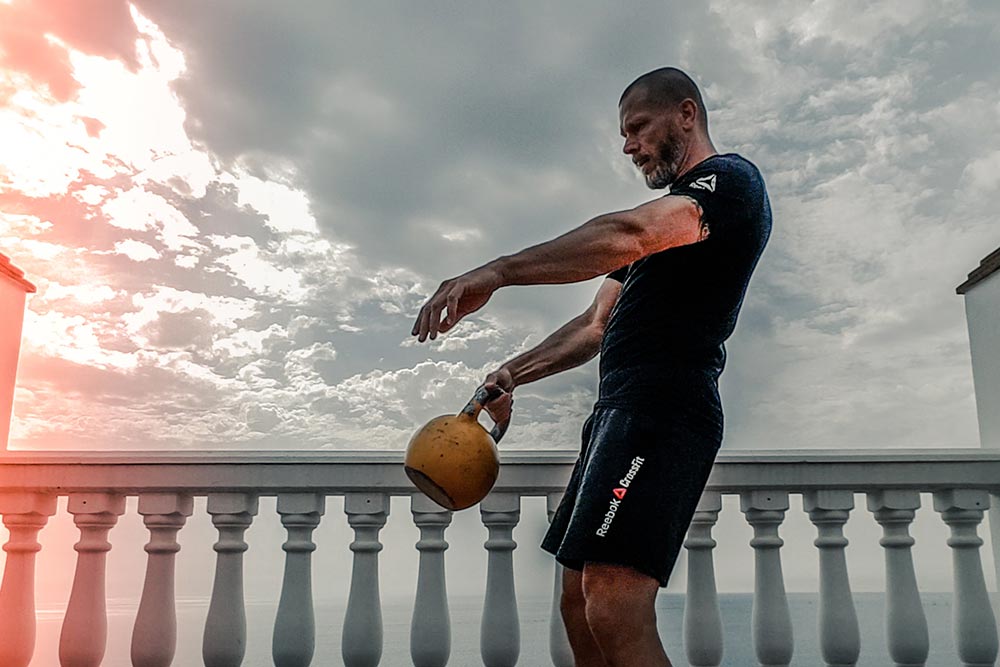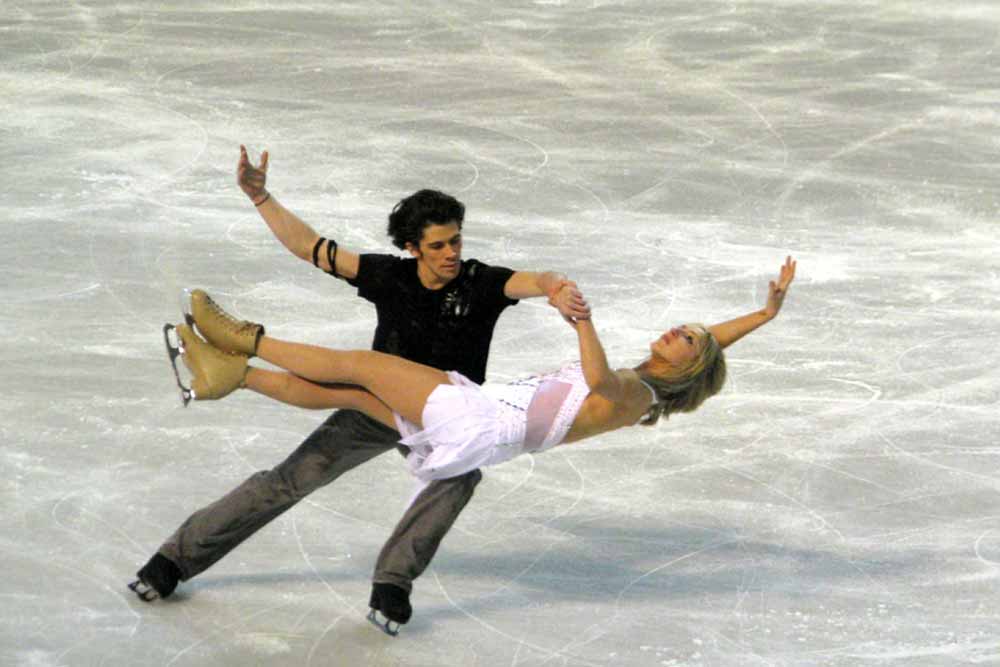Cell Phone Activity Trackers

Dayton Kelley
As advances in technology continue to rapidly drive the world of exercise forward, we are faced with new and improved ways to monitor and promote our fitness. This capacity to monitor our training is essential because it allows us to design our programs such that we are continuing to tackle workouts of progressing difficulty: an important stipulation for training programs that will offer benefits in the long term (Plowman & Smith, 2014). Fortunately, technological advances offer us this ability at an ever-decreasing cost: pedometers – which track the number of steps you take – are currently one of the cheapest options and even come pre-downloaded on most smartphones (costing you nothing above what you already likely pay; Kang, Marshall, Barreira, & Lee, 2009; Mitchell, et al., 2016). These applications can be found on both Apple (“Apple health”) and Android  devices (“Google fit” and “Samsung Health”) devices.
devices (“Google fit” and “Samsung Health”) devices.
Related Article: Sitting Disease – The New Smoking
A pedometer can be a powerful way to record and improve your fitness. Advocates of pedometer training programs have recommended that to meet your daily fitness requirements adults should take 10 000 steps/day whereas children should take 12 000 to 15 000 steps daily (Tudor-Locke, et al., 2004; Bohannon, 2007). However, the more common (and evidence-based) recommendation for daily physical activity is published by the World Health Organization who suggest adults should engage in 150 minutes/week of moderate to vigorous activity in bouts of at least 10 minutes (World Health Organization, 2018). On the pedometer, this can be translated into ≥ 100 steps/minute to meet the standards for moderate intensity exercise (Marshall, et al., 2009; Tudor-Locke, Sisson, Collova, Lee, & Swan, 2005). Using these reference numbers, it becomes easy to see the base amount of physical activity you should be completed in a day and work towards and past this goal. Investigations have repeatedly demonstrated that increasing the number of steps taken in a day is a common health intervention and reliably induces weight loss (Richardson, et al., 2008). What’s more, most smartphone pedometer applications will quantify, calorically, the amount of energy you burn from these workouts allowing you to better understand the amount of food you can eat in a day while still losing weight.
However, we must take a moment to consider whether these devices are accurately and reliably measuring and recording the physical activity. Pedometers may miscount steps particularly during turns and may be influenced by where it is worn. Thus, it bears the question: can smarts phones collect strong step data, and what precautions must be taken to ensure accurate recording?
Can cell phones reliably and accurately track steps?
To test the pedometer function of common cell phones, a sample of 20 healthy volunteers were recruited (Hocksmann, 2018, July). Participants completed a 5-minute treadmill walking test at 1.6 km/h, 3.2 km/h, 4.8 km/h, and 6.0 km/h with an iPhone and Samsung in three locations: at the hip, in a backpack, and in a purse. Steps were tracked by Apple health, Accupedo, pacer, and Runtastic applications. Participants also completed an outdoor walking course at a self-selected pace to better mimic the turns and changes in speed that occur with regular gait. In all cases, the number of steps was concurrently monitored using a conventional accelerometer and video recordings (Hocksmann, 2018, July).
As steps could be counted from the video recordings, the phone and accelerometer were measured against a manual count (Hocksmann, 2018, July). For each speed on the treadmill, the iPhone performed within 3% of the manual count and only slightly better than the Samsung which met this range on all but the slowest speed. Difficulty tracking walking at low speeds is common to pedometers and was demonstrated by the accelerometer which only approached this validity at the highest two speeds. A similar order and a range of accuracy were discovered for the walking course task but with each device performing slightly more poorly. The location of phone placement did not result in  significantly different readings by either the iPhone or Samsung device (Hocksmann, 2018, July).
significantly different readings by either the iPhone or Samsung device (Hocksmann, 2018, July).
Related Article: Motiv Ring: The Next Best Innovative Fitness Tracker
Do Smartphone pedometers get the job done?
These findings suggest step recording by iPhone and Samsung cell phone devices are accurate and may be useful for self-recording fitness and/or research purposes when they are worn in the pocket, backpack, or purse (Hocksmann, 2018, July). Future research will be required to determine if similar findings are discovered in older or disabled individuals in which gait may deviate from the norm. Currently, tracking physical activity by steps taken using cell phone devices appears as a reliable and valid measure. Above this, it may also provide benefits outside of fitness. Numerous applications exist which reward users for completing mileage.
Do applications exist that reward me for the steps I take?
Using charity miles, you can cash in the steps you take for a monetary figure that will be donated to a charity of your choice. They allow you to donate to any of 24 charities including the Alzheimer’s Association, Stand up to Cancer, and Habitat for Humanity.
After downloading Sweatcoin, you will be rewarded with Sweatcoin digital currency for every step you take. Using these “sweatcoins” you can buy or obtain discounts on products from a variety of partner organizations selling gadgets, fitness equipment and more.
Carrot is a Canadian application that will reward you with points on another of your points-based cards: you can choose to receive Aeroplan Miles, Scene points, or Petro points among others.
In StepBet, you have the opportunity to bet money on the number of steps you will walk in a given week. If you complete the goal, you will be rewarded from the pot of those who were unable to live up to the challenge. While this can allow for bigger earnings, it also carries the risk of losing your money! This risk is perhaps not all bad as it may be a strong motivator to complete your fitness goals.
By signing up for WinWalk, you earn money towards e-gift cards or are entered into draws for walking. You can win fitness equipment or use your tickets instead for discounts on products of your choice.
Takeaway
Using a smartphone pedometer application can be a fun way to encourage training and reliably track your fitness progress. While the applications mentioned are popular options, numerous variations are available. Have a look in your app store and find something that works for you. Good luck stepping!
This article was adapted from a combination of speeches given at the European Sports Science Conference 2018, most notably Christoph Hochsmann (UNIVERSITY OF BASEL, SWITZERLAND).
References
Bohannon, R. W. (2007). Number of pedometer-assessed steps taken per day by adults: A descriptive meta-analysis. Physical Therapy, 87(12), 1642-1650. doi:https://doi.org/10.2522/ptj.20060037.
Hocksmann, C. (2018, July). Step count accuracy of smartphones during various walking conditions when worn at different wearing positions. Paper presented at the 23rd European Sports Science Conference, Dublin, IE. Abstract retrieved from http://ecss-congress.eu/2018/18/index.php?option=com_wrapper&view=wrapper&Itemid=714.
Kang, M., Marshall, S. J., Barreira, T. V., & Lee, J. O. (2009). Effect of pedometer-based physical activity interventions: a meta-analysis. Research quarterly for exercise and sport, 80(3), 648-655. doi:0.1080/02701367.2009.10599604.
Marshall, S. J., Levy, S. S., Tudor-Locke, C. E., Kolkhorst, F. W., Wooten, K. M., Ji, M., . . . Ainsworth, B. E. (2009). Translating physical activity recommendations into a pedometer-based step goal: 3000 steps in 30 minutes. American Journal of Preventive Medicine, 36(5), 410-415. doi:10.1016/j.amepre.2009.01.021.
Mitchell, J., Hardeman, W., Pears, S., Vasconcelos, J. C., Prevost, A. T., Wilson, E., & Sutton, S. (2016). Effectiveness and cost-effectiveness of a very brief physical activity intervention delivered in NHS Health Checks (VBI Trial): study protocol for a randomised controlled trial. Trials, 17(1), 303. doi:https://doi.org/10.1186/s13063-016-1413-2.
Plowman, S. A., & Smith, D. L. (2014). Exercise physiology: For health, fitness, and performance. Baltimore: Wolters Kluwer.
Richardson, C. R., Newton, T. L., Abraham, J. J., Sen, A., Jimbo, M., & Swartz, A. M. (2008). A meta-analysis of pedometer-based walking interventions and weight loss. The Annals of Family Medicine, 6(1), 69-77. doi:10.1370/afm.761.
Tudor-Locke, C., Pangrazi, R. P., Corbin, C. B., Rutherford, W. J., Vincent, S. D., Raustorp, A., . . . Cuddihy, T. F. (2004). BMI-referenced standards for recommended pedometer-determined steps/day in children. Preventive medicine, 38(6), 857-864. doi:10.1016/j.ypmed.2003.12.018.
Tudor-Locke, C., Sisson, S. B., Collova, T., Lee, S. M., & Swan, P. D. (2005). Pedometer-determined step count guidelines for classifying walking intensity in a young ostensibly healthy population. Canadian Journal of Applied Physiology, 30(6), 666-676. Retrieved from http://www.nrcresearchpress.com/doi/pdf/10.1139/h05-147.
World Health Organization. (2018). World Health Organization. Retrieved from Global Strategy on Diet, Physical Activity and Health: http://www.who.int/dietphysicalactivity/factsheet_adults/en/










